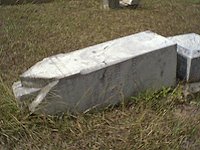W. P. "Sioux" Doran was born on March 3, 1938 in the Lynchburg Community of Harris County, Texas. In 1861 he enlisted in Company A, 2nd Texas Infantry. He fought at the battle of Shiloh and later at the battle of Galveston. Sometime after that he received a discharge from the army in order to accompany General Tom Green's 2nd Cavalry as a civilian war correspondent for The Galveston Weekly, The Tri-Weekly News and the Houston Tri-Weekly Telegraph. He was seldom recognized as the writer of his news stories because he wrote under the nom de plume of "Sioux".
His first article written under the name "Sioux" appeared in the "Weekly" on May 20, 1863. Just after that he left with the 2nd Cavalry riding a mule to Louisiana in late July 1863. In Thibodeaux he and a few Confederates were sleeping in a cow barn while the federals retook the area during the night. They were taken prisoner the next morning and he was taken to New Orleans and to General William H. Emery's outer office to await questioning. The General was almost deaf and when General Nathaniel Banks practically screamed at Emory to inform him of his plans to invade Texas at Sabine Pass, Doran overheard the plans. Since Doran was a civilian he was allowed to leave provided he sailed on a neutral schooner for Mexico. As the ship sailed, he saw hundreds of soldiers and several gunboats and transports in the river that were to become part of the invasion fleet. After a stormy week at sea he landed at the Rio Grande where he got a buggy to take him to Brownsville. Doran rode horseback from Brownsville for 9 days until he reached Columbus where a train was just fixing to leave for Houston. In Houston he informed General John Magruder of the coming invasion. General Magruder telegraphed the information to the garrison at Sabine Pass. The defenders captured 2 gunboats and 350 prisoners. After a 1,000 mile journey by ship, buggy, horse and train he was often called the "Rebel Paul Revere".
Doran rejoined General Green in Louisiana in March of 1864 and was there to report on the battles of Mansfield, Pleasant Hill, Blair's Landing, and Yellow Bayou before returning to Houston. After the war ended, Doran moved to Brenham and then Hempstead and continued writing articles for the Galveston Tri-Weekly and the Daily News until he died on November 25, 1901 and was buried in the Hempstead Cemetery.
His obituary in the Daily News on November 27, 1901 reads as follows;
"Major Doran?Announcement Of His Death Causes Sorrow Among Brenham Friends
Brenham, Nov. 27?Major Doran had many friends in Brenham who sorrowed on reading the announcement of his death at his home in Hempstead yesterday. Major Doran married Sally, a daughter of Dr. Gideon Linsecum, a Texas pioneer and a very prominent physician here. Major Doran was elected City Marshall of Brenham in 1880--served for two terms. Doran achieved distinction during the civil war as our war correspondent under the nom de plume of "Sioux". After the war, while living in this city, he continued as correspondent of the News, and after his removal to Hempstead was a contributor to our columns under his real name. A few weeks before his death, Major Doran stated to this correspondent that his connection to the News as a war correspondent antedated that of any living man. Several members of Washington Camp 239, U. C. V. went to Hempstead this evening to attend his funeral."
